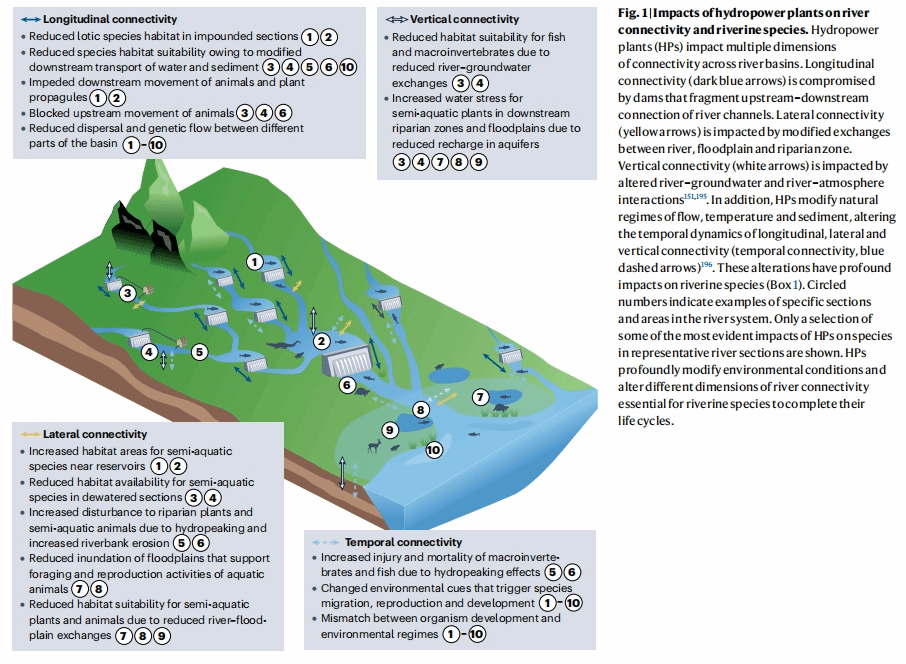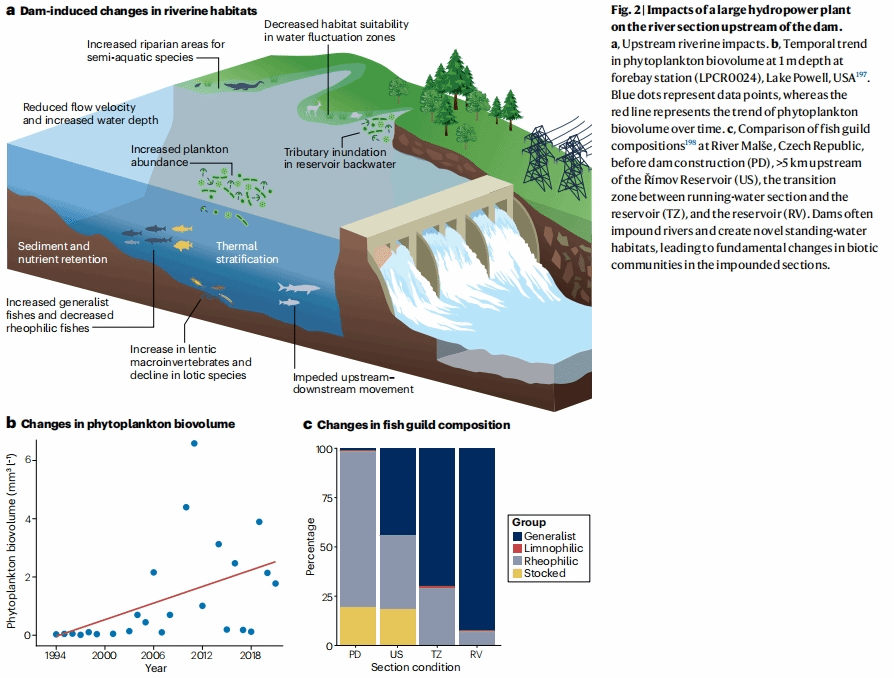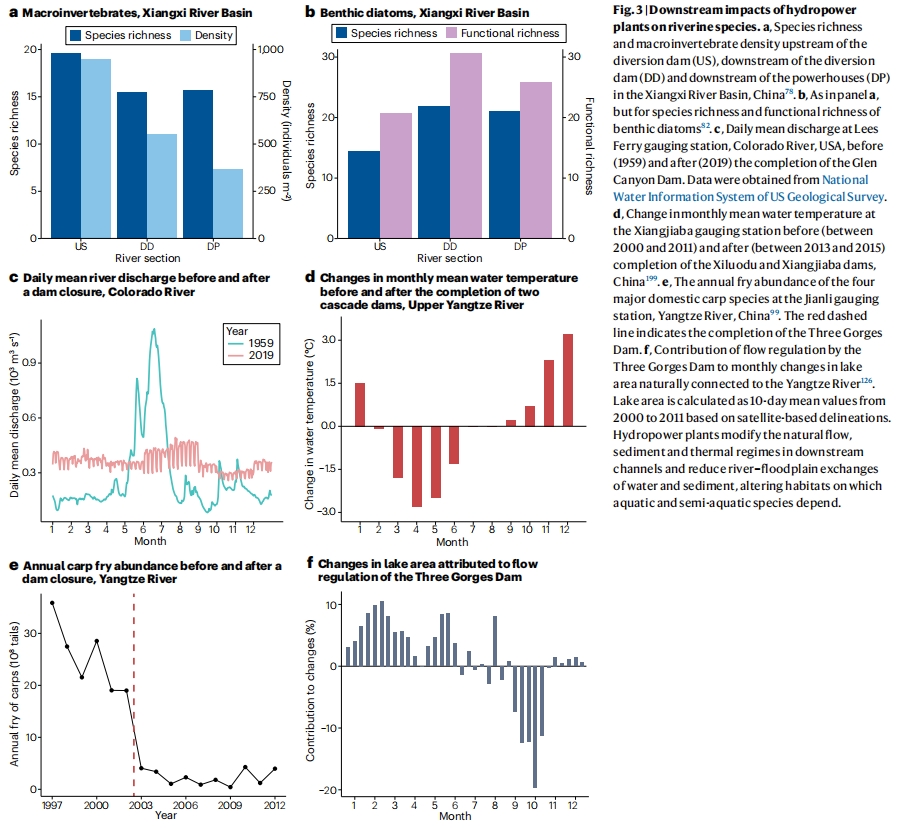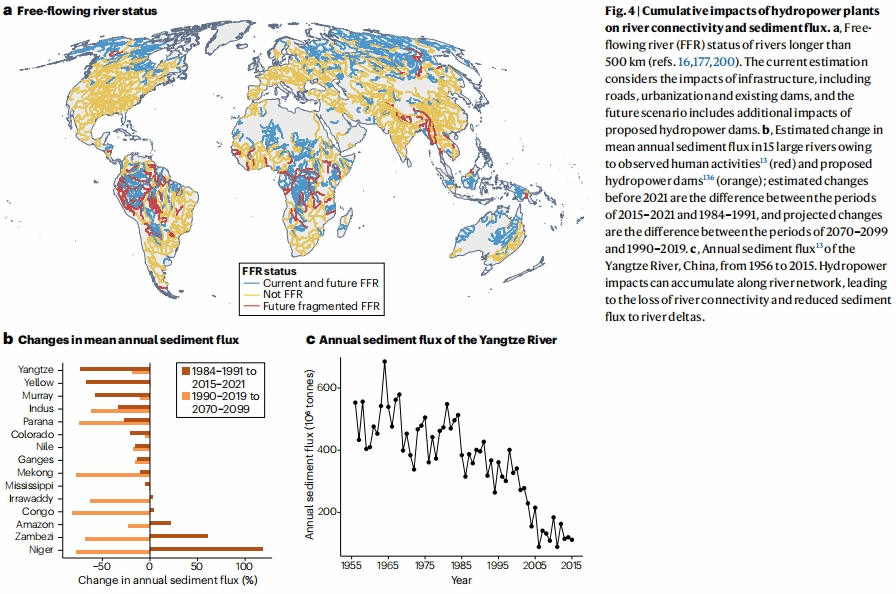文章信息:He, F., Zarfl, C., Tockner, K., Olden, J.D., Campos, Z., Muniz, F., Svenning, J.-C., Myneni, R.B., Allen, C.D., Jähnig, S.C. (2024). Hydropower impacts on riverine biodiversity. Nature Reviews Earth & Environment, 5, 755–772. https://doi.org/10.1038/s43017-024-00596-0
整理人:闫甲祺,2024级硕士研究生
整理时间:2024年12月30日
Abstract: Hydropower is a rapidly developing and globally important source of renewable electricity. Globally, over 60% of rivers longer than 500 km are already fragmented and thousands of dams are proposed on rivers in biodiversity hotspots. In this Review, we discuss the impacts of hydropower on aquatic and semi-aquatic species in riverine ecosystems and how these impacts accumulate spatially and temporally across basins. Dams act as physical barriers that disrupt longitudinal connectivity and upstream–downstream movement of species. Impoundment creates still-water habitats upstream of dams and leads to declines in lotic-adapted species. Intermittent water releases modify the natural flow, sediment and thermal regimes in downstream channels, altering water quality, substrate structure and environmental cues that are vital for species to complete their life cycles, resulting in reduced reproduction success. Moreover, retention effects of reservoirs and flow regulation alter river–floodplain exchanges of water, sediment and nutrients, modifying the habitats on which riverine species depend. Improvements to flow regulation, fishway design and sediment redistribution can mitigate these ecological impacts. Future research should support reforms to dam operations and design adaptations to balance renewable electricity development and biodiversity conservation through systematic basin-scale planning, long-term monitoring, adaptive management and involving multiple actors in decision-making.
摘要:水力发电是一种快速发展且全球重要的可再生电力来源。全球范围内,超过 60% 长度超过 500 公里的河流已经支离破碎,并且拟在生物多样性热点地区的河流上修建数千座水坝。在这篇综述中,我们讨论了水电对河流生态系统中水生和半水生物种的影响,以及这些影响如何在流域内空间和时间上累积。水坝作为物理屏障,破坏了物种的纵向连通性和上下游运动。蓄水在水坝上游创造了静水栖息地,并导致适应潮水的物种减少。间歇性的水释放改变了下游渠道的自然流动、沉积物和热状况,改变了对物种完成其生命周期至关重要的水质、基质结构和环境因素,从而导致繁殖成功率降低。此外,水库的滞留效应和流量调节改变了河流-洪泛区的水、沉积物和养分的交换,改变了河流物种赖以生存的栖息地。流量调节、鱼道设计和沉积物重新分配的改进可以减轻这些生态影响。未来的研究应支持大坝运营和设计调整的改革,通过系统的流域规模规划、长期监测、适应性管理和多方参与决策,平衡可再生电力发展和生物多样性保护。
1. 研究背景:
2. 研究意义:
3. 研究方法:
4. 主要结论:
5. 研究展望:
6. 研究主要图表:

01 水电站对河流连通性和河流种类的影响

02 一个大型水电站对大坝上游河段的影响

03 水电站下游环境对河流物种的影响

04 水电站对河流连通性和泥沙通量的累积影响
原文链接:https://www.nature.com/articles/s43017-024-00596-0
原文转引:https://mp.weixin.qq.com/s/_Q6k7GA1Xbz6WwZFsl-pUw